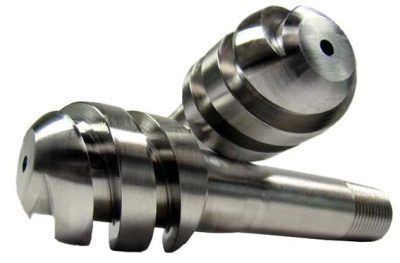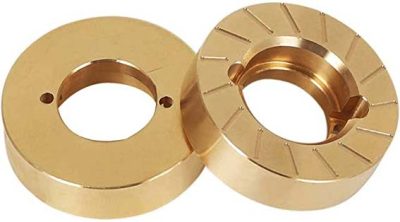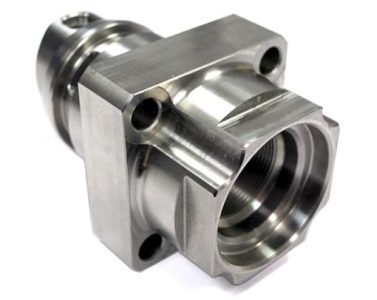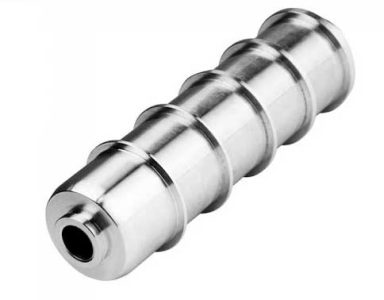Categorías de Producto
Etiquetas de productos
Mensajes recientes
choice of tools for CNC turning small precision parts
The commonly used CNC turning tools are generally divided into three categories: forming tools, pointed tools, arc tools and three types. Forming turning tools are also called prototype turning tools. The contour shape of the processed parts is completely determined by the shape and size of the turning tool blade. In CNC turning processing, common forming turning tools include small radius arc turning tools, non-rectangular turning tools and thread tools.
How to choose tools for CNC turning?
The commonly used CNC turning tools are generally divided into three categories: forming tools, pointed tools, arc tools and three types. Forming turning tools are also called prototype turning tools. The contour shape of the processed parts is completely determined by the shape and size of the turning tool blade. In CNC turning processing, common forming turning tools include small radius arc turning tools, non-rectangular turning tools and thread tools. En mecanizado CNC, the forming turning tool should be used as little as possible or not. The pointed turning tool is a turning tool characterized by a straight cutting edge. The tip of this type of turning tool is composed of linear main and secondary cutting edges. Como 900 type internal and external turning tools, left and right face turning tools, grooving (corte) turning tools, and various external and internal turning tools with a small tip chamfer. The method of selecting geometric parameters (mainly geometric angle) of the pointed turning tool is basically the same as that of ordinary turning. Sin embargo, the characteristics of CNC machining (such as machining route, machining interference, etc.) should be fully considered, and the strength of the tool tip itself should be taken into account.
The second is the arc-shaped turning tool. The arc-shaped turning tool is a turning tool characterized by an arc-shaped cutting edge with a small roundness or line profile error. Each point of the arc edge of the turning tool is the tip of the arc-shaped turning tool. Accordingly, the tool position point is not on the arc, but on the center of the arc. The arc-shaped turning tool can be used for turning inner and outer surfaces, and is especially suitable for turning various smooth connection (concave) forming surfaces. When choosing the arc radius of the turning tool, consider that the arc radius of the cutting edge of the two-point turning tool should be less than or equal to the minimum radius of curvature on the concave contour of the part to avoid machining interference. The radius should not be too small, otherwise it will not only be difficult to manufacture, but also the turning tool will be damaged due to weak tool tip strength or poor heat dissipation capacity of the tool body.
The amount of CNC cutting
In NC programming, the programmer must determine the cutting amount of each process and write it in the program in the form of instructions. Cutting parameters include spindle speed, back-cutting amount and feed speed. For different processing methods, different cutting parameters need to be selected.
The selection principle of cutting amount is:
Ensure the machining accuracy and surface roughness of the parts, give full play to the cutting performance of the tool, ensure reasonable tool durability, and give full play to the performance of the machine tool to maximize productivity and reduce costs.
1. Determine the spindle speed
The spindle speed should be selected according to the allowable cutting speed and the diameter of the workpiece (or tool).
The calculation formula is: n=1000 v/7 1D
Where: v is the cutting speed, the unit is m/m movement, which is determined by the durability of the tool; n one spindle speed, the unit is r/min, D is the diameter of the workpiece or the tool diameter in mm. For the calculated spindle speed n, the speed that the machine tool has or is close should be selected at last.
2. Determine the feed rate
Feed speed is an important parameter in the cutting parameters of CNC machine tools, which is mainly selected according to the machining accuracy and surface roughness requirements of the parts and the material properties of the tools and workpieces. The maximum feed rate is limited by the rigidity of the machine tool and the performance of the feed system. The principle of determining the feed rate: When the quality requirement of the workpiece can be guaranteed, in order to improve the production efficiency, a higher feed speed can be selected. Generally selected in the range of 100-200mm/min; al cortar, processing deep holes or processing with high-speed steel tools, a lower feed rate should be selected, generally in the range of 20-50mm/min; When the machining accuracy and surface roughness are required to be high, the feed speed should be smaller, generally in the range of 20-50mm/min; When the tool is idling, especially for long-distance "zero return", the maximum feed rate set by the CNC system of the machine tool can be set.
3. Determine the depth of cut
The depth of cut is determined by the rigidity of the machine tool, workpiece and tool. Under the condition that the rigidity allows, the amount of back-grabbing should be equal to the machining allowance of the workpiece as much as possible, which can reduce the number of passes and improve production efficiency. In order to ensure the quality of the processed surface, a small amount of finishing allowance can be left, generally 0.2-0.5mm. In short, the specific value of cutting parameters should be determined by analogy based on the performance of the machine tool, related manuals and combined with actual experience.
Al mismo tiempo, the spindle speed, cutting depth and feed speed can be adapted to each other to form the best cutting parameters.
Cutting amount is not only an important parameter that must be determined before machine tool adjustment, but also whether its value is reasonable or not has a very important influence on processing quality, processing efficiency, and production cost. Por "reasonable" amount refers to take advantage of cutting tools and cutting tool power performance (power, torque), to ensure the quality of the premise, to achieve high productivity and low cost of the cutting amount of the processing.

turning complex aluminium parts

swiss turning copper product

turning precision stainless steel parts

turning complex metal product
Contáctenos
Esperando tu email, le responderemos dentro de 12 horas con la valiosa información que necesitabas.
 English
English العربية
العربية 中文(漢字)
中文(漢字) Čeština
Čeština Dansk
Dansk Nederlands
Nederlands Suomi
Suomi Français
Français Deutsch
Deutsch Italiano
Italiano 日本語
日本語 ಕನ್ನಡ
ಕನ್ನಡ 한국어
한국어 Português
Português Русский
Русский Slovenčina
Slovenčina Español
Español Svenska
Svenska Türkçe
Türkçe






